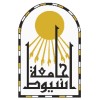
Effects of Mirror Therapy Combined With Progressive Strength Training in Unilateral Spastic Cerebral...
Spastic Hemiplegic Cerebral PalsyThe purpose of this study is to investigate the effects of mirror therapy combined with upper extremity strengthening training on upper extremity function in children with unilateral spastic Cerebral Palsy (CP): a single blind randomized controlled trial. In the literature, there was no randomized controlled trial. According to literature, there are few studies that investigate the effects of mirror therapy in children with CP. But there is no randomized controlled trial, explore the effects of mirror therapy combined with upper extremity strength training on upper extremity functions in unilateral spastic CP. Hypothesis of this study is that mirror therapy combined with strength training improves upper extremity function and muscle strength in unilateral spastic CP.

Improvement in Gross Motor Function and Muscle Tone in Children With Cerebral Palsy Related to Neonatal...
Cerebral PalsyThe purpose of this study is to evaluate the safety and effectiveness of stem cells for cerebral palsy related to neonatal icterus

Injection Laryngoplasty Using Autologous Fat Enriched With Adipose Derived Regenerative Stem Cells...
Vocal Cord ParalysisUnilateralThis is the first Development Safety Update Report prepared for Phase I-IIA Clinical Trial- FIBHGM-ECNC007-2010 (PHASE I / IIA CLINICAL TRIAL, UNICENTRIC, RANDOMIZED, CONTROLLED, TWO PARALLEL-GROUPS, TO EVALUATE THE SAFETY OF A NEW THERAPY WITH STEM CELLS DERIVED FROM ADIPOSE TISSUE FOR GLOTTAL GAP(GG) IN THE UNILATERAL PARALYSIS OF THE VOCAL CORD(VC) ) in the International Conference on Harmonization (ICH). Patients are randomized to receive one of the following therapeutic strategies: Group A: Autologous Fat processed by centrifugation to fill a paralyzed vocal cord. Group B: Autologous Fat enriched with stem cells from adipose tissue to treat vocal cord paralysis. Active control: Autologous fat tissue processed by centrifugation. Route of administration: Injection into a paralyzed vocal cord. Experimental drug: Stem cells from autologous adipose tissue in which autologous tissue is enriched or in suspension to fill the paralyzed vocal cord. The aim is to induce the overexpression and production of microvessels at local level. Route of administration: injection into the thickness of a paralyzed vocal cord.

Constraint-Induced Movement Therapy and Action Observation Training in Children With Unilateral...
Cerebral PalsyA randomized, controlled, and evaluator-blinded trail will be carried out comparing CIMT with or without AOT on sensorimotor outcome in children with unilateral CP aged 5 to 12 years. Additionally the potential role of neurological factors, including the anatomical characterization of the brain lesion, structural/functional connectivity and cortical reorganization, on treatment response will be investigated.

Effectiveness of the Functional Hand Splint and Specific Tasks in the Domiciliary Environment Applied...
Hemiplegia and HemiparesisCerebral Palsy InfantileThe main objective: To determine the effectiveness of a treatment that combines the application of a functional upper limb orthosis together with a home-based program of specific tasks in children with unilateral cerebral palsy versus a home-based program of specific tasks in improving structure and function, activity and participation. Hypothesis: The application of a functional upper limb orthosis together with a home-based program of specific tasks in children with unilateral cerebral palsy results in a greater improvement in structure and function, activity and participation compared to the implementation of a home-based specific task program.

Steroid-Antiviral Treatment in Rehabilitation of Facial Palsy
Facial PalsyThe purpose of this study is to assess the efficacy of antiviral medicine (acyclovir) in recovery of complete facial Palsy. Fifty patients (Males and females) with acute Facial Palsy within the first 3 days of onset with age ranged from 15-60 years old. Each patient was submitted to the following clinical evaluation using House and Brackmann 6 facial function scoring system and Synnybrook grading system. Neurophysiological assessment of facial nerve and muscles was done before and after the end of treatment, then after the end of first and second month of treatment. EMG was done for facial muscles of both sides beside measuring facial nerve excitability to determine the excitation threshold by recording the minimum electrical stimulus required to produce visible muscle contraction. A difference greater than 3.5 mA between the affected and unaffected side is considered significant in terms of poor prognosis. Nerve conduction study of facial nerves of both sides using concentric needle electrode. Trigeminal Blink reflex for both sides of the face. Facial functional recovery was defined as "good" or "complete" using the same criteria used in the 2001 practice guideline. An outcome of grade I or II was considered a good recovery using the House and Brackmann 6 facial function scoring system

Study of a New Technique to Improve the Symptoms of Orofacial Discomfort in Patients With Peripheral...
Peripheral Nerve Facial Nerve ParalysisFacial Nerve Diseases1 moreThe purpose of this study was to evaluate the effects of Neuro Occlusal Rehabilitation (RNO) in patients with peripheral facial palsy (PFP) disease, noting the decrease in symptoms of masticatory dysfunction. According to Carvalho (2009) patients with PFP have chronic unilateral masticatory preference. Santos et al. (2009) in the same year noted that these conditions can lead to problems with temporomandibular disorder. Hypothesis- known that performing occlusal adjustment in these patients with chronic PFP, ensuring a maximum of dental contacts and a final stop of the masticatory cycle stable, providing a balanced occlusion. dental cleaning was performed in two groups for the blind study visual analog scale -To assess the quality of the oral functions of these patients, the investigators applied the visual analog scale(VAS) and statistically evaluated the degree of satisfaction regarding the functions of oro facial in relation to mastication and temporomandibular dysfunction. gnathostatic models were made in the treatment group in the first and last query. occlusal adjustment in treatment group.In the group treated occlusal adjustment was made in the teeth and applied a new (VAS) before and after treatment. The RNO, is defined as a part of medicine that operates in stomatology occlusal plane as a guide to a harmonious development of the face, chewing facilitating bilateral and alternating. (Planas, 1997). It works through selective grinding on the occlusal platform, providing an increased number of dental contacts.

rTMS and Functional Paralysis
Psychogenic ParalysisPsychogenic paralysis presents a real treatment challenge. Despite psychotherapy, physiotherapy, antidepressants, acupuncture or hypnosis, the outcome is not always satisfactory with persistent symptoms after long-term follow-up. In a preliminary retrospective study on 70 patients with psychogenic paralysis (44F/26M, mean age : 24.7 ± 16.6 ys), repetitive transcranial magnetic stimulation (rTMS) delivered over the motor cortex at low frequency was effective in 89% of cases (recovery: n=53, improvement: n=9), with an immediate or quasi-immediate recovery in 73% of patients (n=51). We suggest that the dramatic improvement of psychogenic paralysis after rTMS could be due to the restoration of an appropriate cerebral connectivity by activating a suppressed motor cortex. Nevertheless, the possibility of a placebo effect cannot be ruled out. A prospective multicentric (Rouen, Caen) randomized controlled trial versus placebo will be done for 94 patients with psychogenic paralysis, 1- to evaluate rTMS efficacy for paralysis at short and long term follow-up, and 2- to confirm rTMS safety. Two rTMS sessions will be performed at D0 and D1 (120 pulses over 2 days, delivered over the motor cortex at 2 Hz) with an active or a sham coil. Post-rTMS assessment will evaluate 1- the degree of the paralysis at D2 (quantified by a videotape) and D60 (quantified by an interview and a standardized examination), 2- the number and gravity of side effects. If psychogenic paralysis improvement by motor cortex rTMS is confirmed, rTMS could be considered a useful early therapeutic option.

Spread And Effectiveness Of Botulinum Neurotoxin A In Spastic Equinus In Cerebral Palsy
Cerebral Palsy and Botulinum ToxinObjectives. To study the short-term neurophysiological and clinical outcome of botulinum toxin type A(BoNT-A), injected at standard doses, and assess toxin spread to neighboring uninjected muscles in children with cerebral palsy. Subjects and methods. The investigators studied 18 ambulatory children with dynamic equinus foot deformity (mean age 6.1 years). The gastrocnemius muscle on the affected side was injected with BoNT-A (Dysport, range from 8.9-19.4 U/kg). As the primary neurophysiological outcome measure, compound muscle action potential (CMAP) areas were assessed in the lateral gastrocnemius (LG) and tibialis anterior(TA) muscles on the treated and untreated side before BoNT-A injections (T0), and on days 10 (T10), and 30 (T30) after injections. Clinical scales were assessed and video gait was analyzed at all three time points. Results. In all patients, CMAP areas recorded from the LG and TA muscles on the treated side decreased significantly from pre-injection values at T10 (p<0.05) and T30 (p<0.002). Assessment at both time points after injections also showed that ankle spasticity had diminished (p<0.05), equinus foot excursion increased (p<0.05), and functional gait improved (p<0.05). Conclusion. Although BoNT-A injected at standard doses improves gait in children with spastic equinus foot the toxin spreads to uninjected leg muscles. BoNT-A treatment for cerebral palsy therefore needs individualizing according to the child's clinical features.

Skeletal Muscle Paralysis in Hypothermic Patients After Cardiac Arrest
Cardiac Arrest With Successful ResuscitationHypothermia1 moreMild hypothermia improves neurological outcome after cardiac arrest. Neuromuscular blockers are in use, together with analgesia and sedation, during the cooling process in many centers to prevent shivering. Since neuromuscular blockers are accused to be associated with various side effects causing serious harm and/or leading to prolong ICU stay. So economical use seems to be reasonable. Furthermore, the use of neuromuscular blockers may mask epileptic activity. Therefore, post hypoxic seizures might remain undetected. Aim of this study is to investigate if a continuous application of neuromuscular blockers is necessary to prevent shivering and thereby avoid the counter regulation to achieve the target temperature as soon as possible in mild hypothermic therapy after cardiac arrest. A single center (university hospital) study. Randomized, double blinded, double dummy study design. Eligible are all adult patients after successful resuscitation due to cardiac arrest of presumed cardiac origin. All patients receiving mild therapeutic hypothermia after cardiac arrest of presumed cardiopulmonary origin will be included. Patients <18 years, cardiac arrest >6 hours before admittance at the hospital, patients with known or clinically apparent pregnancy, patients who reach our hospital with a body temperature below 35°C, patients with known allergic reactions against rocuronium, patients with a history of myasthenia gravis, patients with obvious intoxication, wards of the state/prisoners and patients with known epileptic disease will be excluded. Primary outcome: Shivering episodes will be scored with the Shivering Assessment Scale. Secondary outcome: Total doses of rocuronium, time to target core temperature of 33°C, dissipated energy and total energy needed during the cooling period will be compared between the two groups. Changes in basal metabolism and depth of relaxation will be ascertained. Furthermore, serum levels of midazolam, fentanyl, rocuronium and stress hormones will be measured. Train-of-four will be performed to assess the depth of relaxation. Sedation will be monitored via bispectral index; measurement of metabolic activity will be evaluated using indirect calorimetry. Additionally, EEG will be performed to detect epileptiform activities. Blood will be drawn to measure levels of midazolam, fentanyl and rocuronium.
